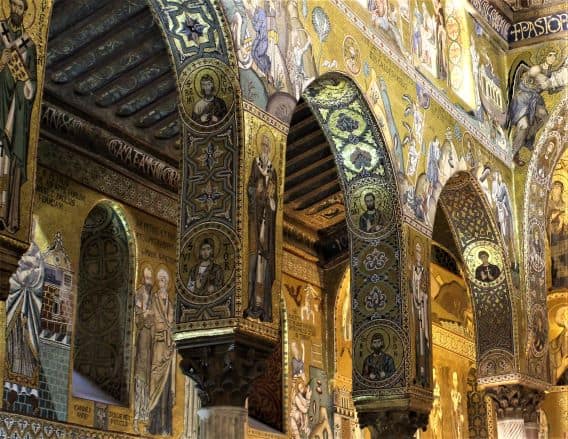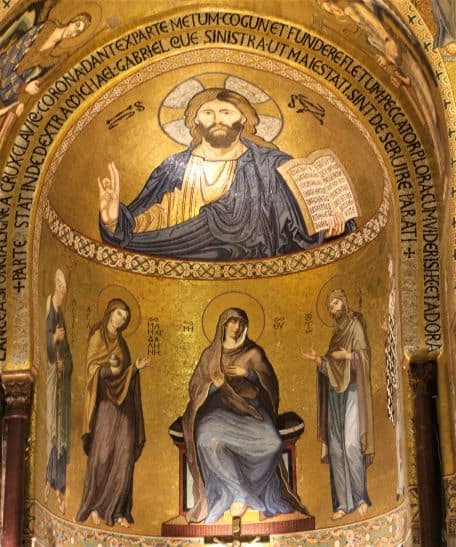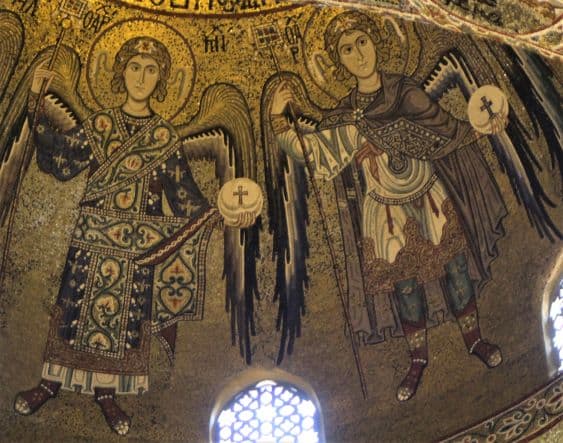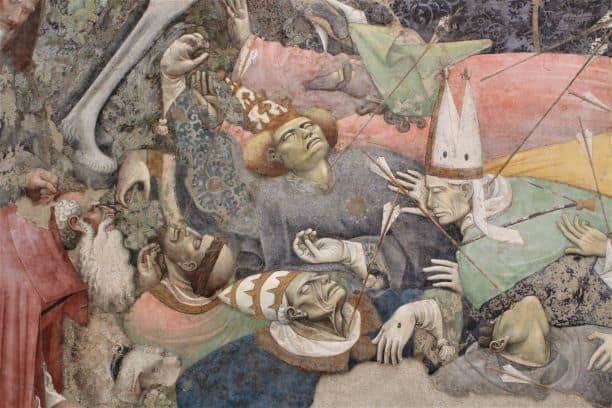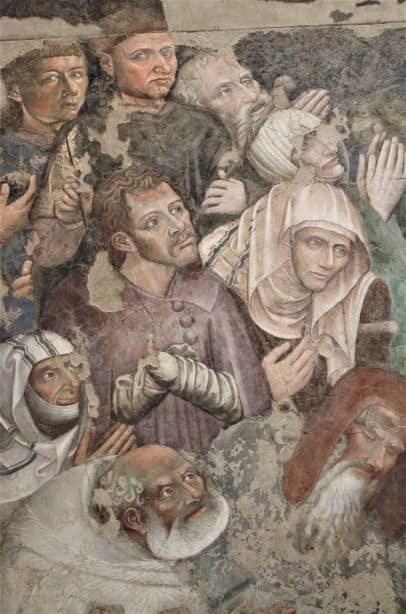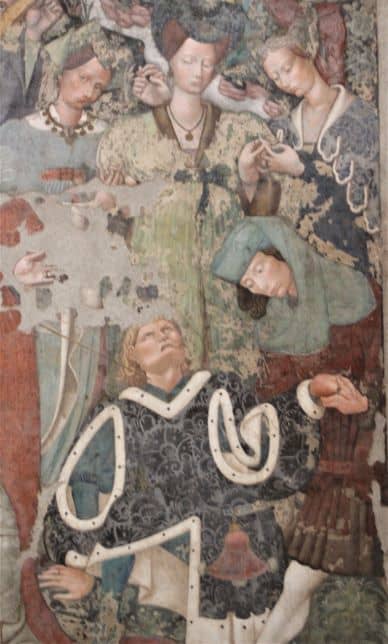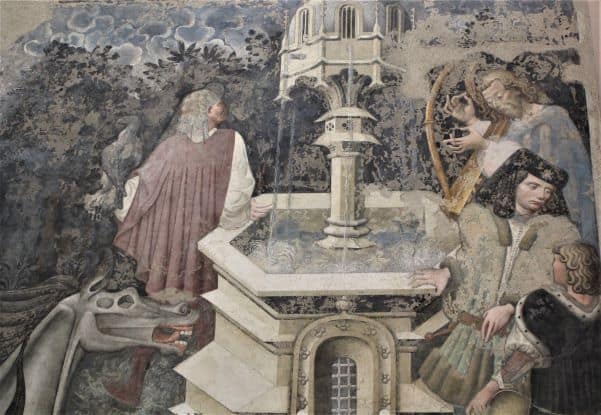Marzipan, Gelato on a bun, & Sfincione
Palermo’s incredible history of empires and armies conquering and occupying the city has left an indelible mark on its cuisine with many dishes and ingredients found nowhere else in Italy.
A Short History
Sicily is one of the most interesting and complicated places because it has been repeatedly conquered by many diverse civilizations throughout its history.

The first people to come to the island were the Sicani who arrived about 10,000 years ago, likely from present-day Spain. The Phoenicians built a colony and were the first to take advantage of Palermo’s natural harbor for trading purposes around 734 B.C. The Phoenicians were mostly peaceful and had an extensive trading partnership with Carthage.
That is, until the Sicilian Wars between Carthage and the Greeks, a struggle for control of Sicily that lasted 300 years until 265 B.C. Palermo went back and forth between Carthage and the Greeks during this time, 300 years of war ultimately deciding nothing until the Romans took control.
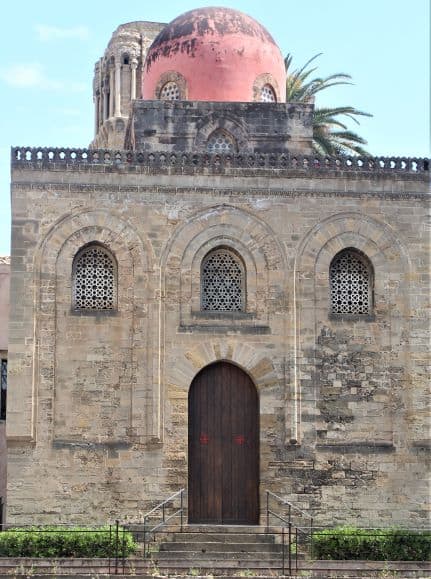
In 440 A.D., as Rome was falling, the Vandals became the first of the series of Germanic tribes to control Sicily. But, the Byzantine Empire took control in the 7th century, followed by the Arabs and Muslim rule which began in 904 and lasted over 100 years. During this time the Arabs introduced sugar, citrus, and nuts to Sicily, all of which are still extraordinarily important to the cuisine of the island.
The Normans wrested Sicily from the Arabs in 1072 under what is called the “Christian Reconquest.” Then, in 1194 Palermo came under the influence of the Holy Roman Empire and what followed was an incredible run of foreign domination by the Angevin (French), Aragon (Spanish), Barcelona, The Kingdom of Spain, The House of Savoy (Turin), Austria. The House of Savoy (again), and House of Bourbon (French) before The Kingdom of Two Sicilies gained control and made briefly Palermo the capital.
Palermo was rocked by insurrections and eventually the Bourbons took control again. That is, until Guiseppe Garibaldi and his troops united Italy as a single country in 1861.
Palermo was heavily bombed during WWII and was the place where the Allies gained a foothold in Italy in 1943. From there, they made there way north, liberating Italy one town at a time.
Since southern Italy and Sicily were largely ignored by the Italian government, a vacuum of economic opportunity was filled by the Cosa Nostra (Mafia). The crime syndicate infiltrated all aspects of life in Palermo; business, judicial, religious. However, in recent years, the power of the Mafia has been diminished greatly by the work of anti-Mafia and anti-Pizzo organizations who have fought the Mafia and their criminal enterprise.
Foodie Palermo
Sicilian food is just like Italian food, right? Wrong! First off, there are 20 regions in Italy and each has its own unique cuisine. But, beyond that, Sicilian cuisine is heavily influenced by the Arabs (technically, from North Africa) who conquered Sicily over 1,000 years ago. So, you’ll see a lot more dishes with citrus and nuts in Sicily than in other parts of Italy.
There are also lots of dishes that come from what most Westerners would think of as less than desirable parts of animals. Stigghiola is the innards of lamb, usually skewered and grilled. Then, there’s the sandwich made of the spleen of veal called Panino con la Milza. The Frittola is made of leftover pieces of meat, lard, and cartridge, the whole mess is boiled down and seared in lard.
Most of these gag-inducing dishes can be found at the many street vendors who have carts all over the city.
Of course, there’s much more to Palermo’s food culture than low-end cuts of meat. There’s many fine dining restaurants, several with Michelin recommendations and one that has received a Michelin star. And, Palermo is home to my favorite sweet in all of Italy, the Brioche con Gealto.
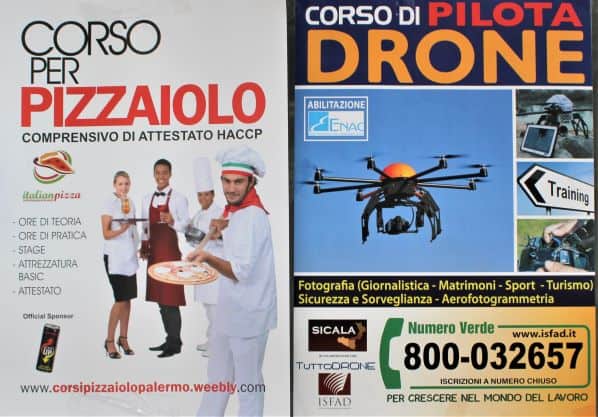
Brioscia
The French had their turn ruling Sicily in the Middle Ages and again in the 19th century. One of the ways the French left their mark was Brioscia, a Sicilian version of the French bread Brioche. Brioscia, of course, has its own twist. Brioscia has less butter than its cousin and is sweetened with honey. Brioscia also has a hint of citrus thanks to the addition of lemon and orange zest.
But, the most characteristic part of the Brioscia is the Tuppo, the little round top of the Brioscia that my friend Eszter calls The Boob of the Brioscia.
The way to eat the Brioscia is to rip off the Tuppo and pop it into your mouth, or, better yet, give it a little dunk in your coffee.
Almost every bakery in Palermo will have a Brioscia, but the best way to have one is with gelato!
Brioche con Gelato
The Arabs, who ruled Sicily for 120 years, brought citrus and nuts like pistachios to Sicily. They are also credited with bringing gelato (ice cream) to Sicily. However, it is more precise to say they brought frozen sweets, something more akin to granita, to Sicily. That is, water, sugar, spices and/or fruit chilled with ice and salt.

The Spanish are thought to have brought ice cream to Sicily.
Whoever gets credit matters less than what happened once the frozen treat arrived. In Palermo, they have something called Brioche con Gelato. Something like a gelato sandwich, a Brioscia is sliced open like a bagel and slabs of gelato (or granita) are slathered inside.
In Palermo, some folks even eat this gelato sandwich for breakfast!
As you can imagine, eating a Brioche con Gelato is a messy affair, especially on a hot Palermo summer day. If you want to be neat, I’d suggest using a spoon to get the drippy gelato before it runs down your forearm. But, really, the sloppiness is part of fun.
Brioscià was my favorite place for a Brioche con Gelato. Unfortunately, they went bankrupt and closed in 2021. But, La Delizia Gelateria does a fine Brioche con Gelato as well.
Sfincione
One of the great street food traditions in Palermo is Sfincione. These spongy little pizza-like delights are sold all over the city by mobile vendors driving around in their adorable 3-wheeled Piaggio Ape, setting up shop on the street or sidewalk for an hour or two before moving on.
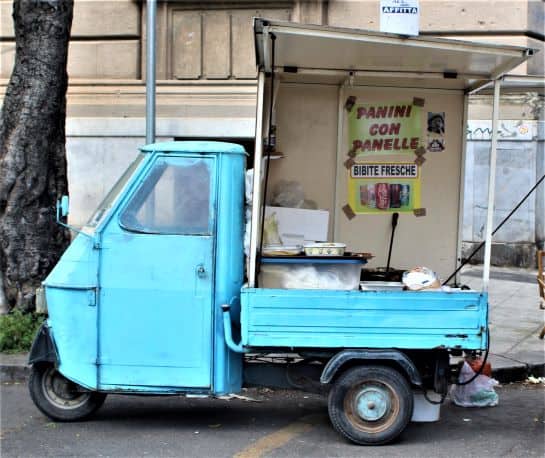
The Sfincione is something like a pizza. In fact, in the U.S., you’ll sometimes see something similar called “Sicilian Pizza.” The crust is lighter than a pizza crust, somewhere between focaccia and brioche, which allows the tomato sauce penetrate the crust, rather than sit on top of it. Onions, oregano, and Caciocavallo Cheese top the Sfincione along with olive oil. Vegetarians take note, most Sfincione has anchovies.

Spinno offers a vegetarian Sfincione by request for dinner.
While the Sficionari (street vendors who sell Sfincione) will keep you satisfied, Panificio Graziano makes a magnificent Sfincione.
Caciocavallo Cheese
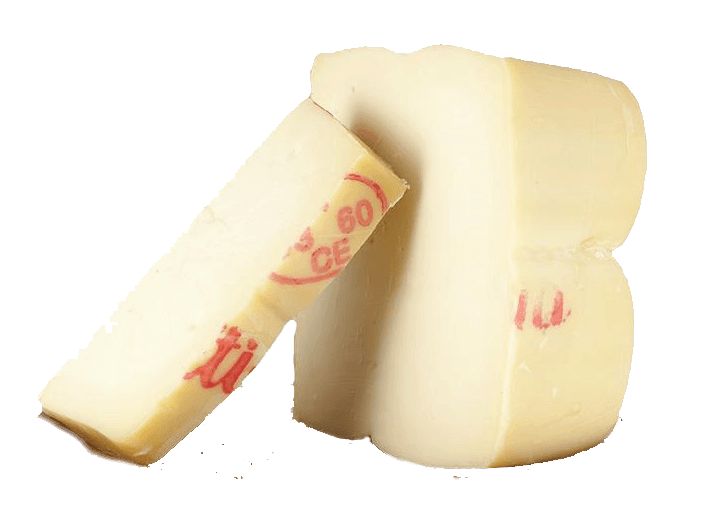
Sfincione, and pasta for that matter, in Palermo is topped with Caciocavallo Cheese. Caciocavallo is an aged cheese with a flavor similar to Provolone. In southern Italy, you’ll often see Caciocavallo in the shape of two globes and it is often hanging from a string in cheese shops or restaurants. But, in Sicily, Caciocavallo is usually made in block form.
Tomato Pie
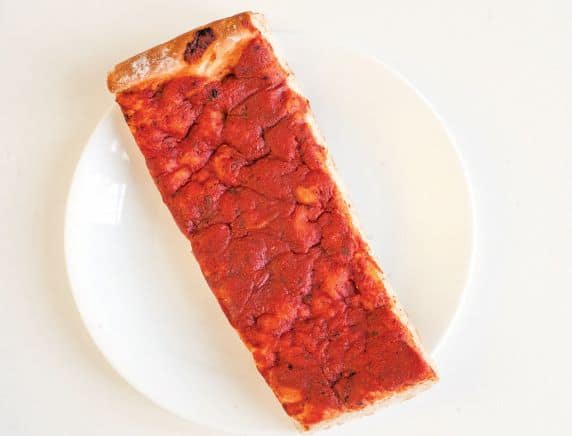
Palermo has Sfincione, but there are variants in the U.S., all falling under the heading of Tomato Pie.
In Rhode Island, Pizza Strips are a common treat at parties and family gatherings. Pizza Strips are made in a rectangular pan and, like the name implies, cut into strips. The crust is topped with tomato sauce and oregano and, sometimes, cheese. Pizza Strips are always served at room temperature.
Utica, NY also has their own Tomato Pie which adds a sprinkling of Parmesan or Romano cheese to the top. Tomato Pie is so beloved in Utica that they even have an annual Tomato Pie Day!
Tomato Pie is also incredibly popular in Philadelphia.
Panelle

So simple, yet so delicious, Panelle is one of the most popular street foods in Palermo. Chickpea flour, salt, pepper, and water are heated in a saucepan until smooth (like Polenta). Herbs (usually parsley) are added and the mixture is spread into a cookie sheet and cooled. The dough is often cut into triangles and fried.
These little strips of fried goodness are sometimes served on a bun.
Street vendors and Friggitoria (fry shops) sell Panelle along with other fried delights like Crocchè. I wrote a piece about what to get at the Friggitoria in my Naples Foodie Travel Guide. Some of the best places in Palermo are Panineria Friggitoria Chiluzzo, ‘Nni Franco U’Vastiddaru, and Nino U’ Ballerino.
Arancina
Arancina (Arancino in Catania and eastern Sicily) are rice balls that are covered in bread crumbs and deep fried. Traditionally, Arancina are filled with a pork (ragu) or a butter (burro). Vegetarians should be aware that the burro sometimes has ham as well.

Countless other fillings are available these days. Arancina with pistachios, eggplant, mushrooms, almost anything you can imagine.
Several creative Arancina shops have opened in Palermo in the last few years. KaPalle has a spinach Arancina and one called Norma with salted ricotta, eggplant and tomato sauce. Yum! Sfrigola has a couple dozen kinds of Arancina, too, including one based on the Caprese salad with tomato, mozzarella, and basil.
Cannoli
I wrote about Cannoli in my Ortigia Foodie Travel Guide. But, the flaky, sweet treat actually originated in Palermo. And, Palermitani (people from Palermo) take their Cannoli very seriously.
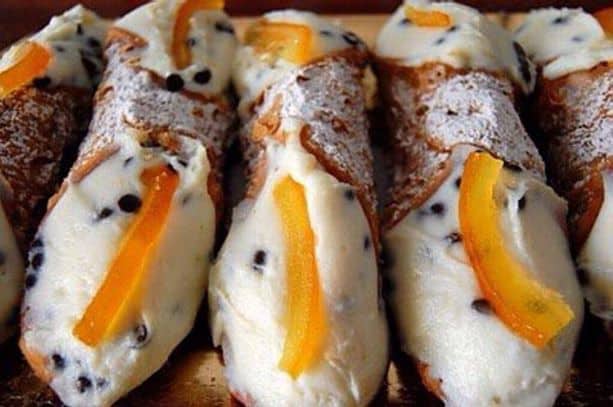
In Sicily, Cannoli filling is made with sweetened sheep’s milk ricotta (never custard) and topped with powdered sugar. Nuts or candied fruit may be added to the end.
When ordering one, be sure to ask for “Un Cannolo.” Cannolo is the singular, Cannoli the plural. The best Cannoli shells are fried on premise and the filling is piped fresh when you order.
Fresh ricotta makes the best Cannoli, so most Sicilians will not order Cannoli in the summer because ricotta isn’t produced during the hot months.
There are lots of great places to get Cannoli in Palermo. One of the best is Pasticceria Jose. But, the best spot to get Cannoli is the town of Piana degli Albanesi, half an hour drive from Palermo.
One last note on Cannoli. Some bakers use lard as an ingredient in their Cannoli shells. Vegetarians should ask before ordering.
Piana degli Albanesi
Piana degli Albanesi has become a pilgrimage spot for Cannoli lovers. Every May the town has a Cannoli festival, but the sweet treats are available year round at the many pastry shops that disciples claim are the best in the world. Two of the best are Extra Bar and Antico Bar Sport.
Piana degli Albanesi is also historically significant. In the 15th century Albanian refugees fled their homeland and settled in Sicily. They called their new town Hora e Arbëreshëvet. Even today, many of the locals speak the Renaissance era language of their ancestors, Arbërisht.
Even though these people are ethnically Albanian, they were known as Greek in Sicily. So, when Mussolini’s Fascists invaded Greece in 1941, he changed the name to Piana degli Albanesi.
After the war, in 1947, locals elected a Communist regional government. Well-known bandit Salvatore Giuliano and his gang, supposedly backed by the Mafia, killed 11 people and injured 27 others during May Day celebrations in retaliation for the election results. However, the real cause of the massacre is still disputed. Today, there is a memorial to the Portella della Ginestra killings in Piana degli Albanesi.
Cassata Siciliana
Cassata Siciliana, or simply Cassata, is a super sweet cake that is often served for special occasions. The inside of the Cassata is simple enough, sponge cake and ricotta are laid in alternating layers. The sponge cake is brushed with simple syrup, or, better yet, Marsala, or best of all, rum. The outer shell of the cake is Marzipan and the whole thing is sometimes topped with Fondant (beware vegetarians, Fondant often contains gelatin). Then, candied fruit is used to decorate the top of the lavish cake.
The origin of the Cassata Siciliana is hotly debated. Most folks will tell you the cake came to Sicily from the Arabs who conquered the island over 1,000 years ago. The Arabs brought sugar and citrus, two integral parts of the cake to Sicily, after all. And, the traditional designs of the candied fruit that adorn the top often have Arab symbolism or influence.

Others say there is no way the cake could be 1,000 years old and say Cassata Siciliana is a more recent invention.
My opinion, for what it’s worth, is that Muslims likely brought some kind of cake making to Sicily in the 10th century. There is, after all, records in Sicily (in Arabic) of “Cassata-makers” in the 12th century. But, this likely refers to cakes, not the dish we know. Today’s Cassata likely (again, my opinion) evolved over time and took certain Arab elements because of the heavy Muslim influence that has been present in Sicily for centuries.
I’ve written about the small Cassatelle di Sant’Agata, which are a smaller variant on the Cassata Siciliana. Individual round sponge cakes are filled with ricotta (and sometimes, chocolate, too) and topped with Marzipan and a cherry. I actually prefer these little cakes to the super-sweet Cassata Siciliana.
Both Cassata Siciliana and Cassatelle di Sant’Agata are available in bakeries all over the city, but the famous Pasticceria Cappello does a great job.
Frutta Martorana
George of Antioch was born in Syria in the late 11th or early 12th century. He lived in northern Africa before falling out with the Emir and escaping on a ship to Sicily where he found employment as a soldier with the Normans who had conquered the island. With his knowledge of northern Africa (present-day Tunisia and Algeria) and Greek and Arabic languages, George quickly rose through the ranks.

George’s military exploits included bringing Puglia and Calabria (including powerful Amalfi) under the rule of his boss, King Roger II of Sicily. Because of his military prowess, George was given the title of Ammiratus Ammiratorum or Admiral of Admirals. George rewarded Roger’s confidence by conquering much of Greece and the important north African city of Tripoli.
In Palermo, the church Concattedrale Santa Maria dell’Ammiraglio (Co-Cathedral of St. Mary of the Admiral) was built around 1143 to honor George and he and his wife were interred there when he died in 1151 or 1152 (no one knows the exact date).
But, the church also has a fascinating role in the culinary history of Palermo. The story goes that in 1535 Emperor Charles V was going to visit the church (other versions of the story say it was an important Bishop who was visiting). The cloistered nuns of Martorana wanted to impress the Emperor, but as it was November, the fruit on the trees was unripe. So, the nuns ingeniously shaped Marzipan (sweet almond paste) into balls resembling fruit, colored them, and hung the sugary fake fruit from the trees.
Legend has it that the Emperor was so impressed the nuns continued the tradition of making Marzipan fruit decoys, now called Frutta Martorana.

Today, realistic looking Marzipan recreations of oranges, bananas, cherries, apples, and every other fruit imaginable decorate shop windows throughout Palermo. The Frutta Martorana are especially popular around All Soul’s Day, or the Festival of the Dead, on November 2nd.
While the church no longer makes Frutta Martorana (the nuns’ cloister closed many years ago), the church still offers services in Greek and caters to the local Albanian community (Arbëreshë) who came to Sicily in the 15th century as refugees from religious persecution.
Though the church was renovated several times over the centuries, the Martorana is worth a visit to see the original 12th century Byzantine mosaics.
Drinking in Palermo
Marsala
Marsala, originally a Carthaginian town, is a busy seaport on the western edge of Sicily. But, it is best known for its eponymous fortified dessert wine. Not surprisingly, Porto, Portugal, also a maker of fine fortified wine, is a sister city of Marsala.
Marsala wine is defined by color, sweetness, and age. Oro is golden in color. Ambra is amber. And, Rubino is ruby because, unlike Oro and Ambra, it is made with red grapes. Sweetness ranges from secco (dry) to semisecco (semisweet) to sweet. And, it should be noted that wineries around Marsala also make table wine in the addition to their famous fortified wine.
Marsala is worth a trip from Palermo, especially if you pair it with a visit to Erice. By car, Marsala is less than 2 hours, but taking the train is a bit of a hassle. That takes 4 hours and requires a change.
In 1773, English trader John Woodhouse landed at the port of Marsala and sampled the local fortified wine. Woodhouse must’ve known of the popularity of another fortified wine, Sherry, from the Andalusia region of Spain, so he started a large Marsala wine production facility in Sicily.

Eventually, the Florio family purchased Woodhouse’s winery and today Florio, along with Pellegrino, are the two biggest producers of Marsala in Sicily. Both of these famous wineries are available for tours.
But, Marco De Bartoli stands firm in defense of the old ways of producing Marsala. His wines are organic (not yet certified, but they’re working on it), and do not use artificial colors or methods to speed production like many mass produced Marsalas. Marco, along with his children who run the winery with him, is the last of a dying breed, doing his best to wave the flag of fine Marsala and remove it from the “just good for cooking” category.
Of course, you could try a bunch of different Marsala wines at an Enoteca (wine bar) in Marsala. La Sirena Ubriaca is an excellent choice.
And, if you can’t make it to Marsala, Palermo’s Enoteca Picone has a nice selection of Marsala wines.

Zibbibo
Winemaking has been a part of Egyptian culture for at least 4,000 years. One of the main grapes grown in Egypt for winemaking was the so-called Muscat of Alexandria, which Cleopatra supposedly drank.
With a similar climate, the ancient vines were brought to Sicily where Muscat of Alexandria was renamed Zibibbo. Vineyards with Zibibbo grapes dot the tiny Sicilian island of Pantelleria where the grapes are dried to make a sweet called Passito aka Raisin Wine.
Visiting the island of Pantelleria makes for a fun trip. There is a ferry that runs daily (except Tuesday) from Trapani to Pantelleria during the summer. Or, you can take a puddle jumper from Palermo’s airport.
There’s no beaches on Pantelleria, but much of the island is a nature reserve with lots of hiking trails and a popular lake created from the crater of an extinct volcano. Specchio di Venere lake is popular for its mineral-rich mud masks.
If you’re trekking for wine, several wineries are open on the island. One of the best is Donnafugata Winery Farmhouse. The winery features vines that are over a century old and survived the phylloxera disease that decimated almost all the vines in Europe.
Of course you could just stay in Palermo and visit Enoteca Picone for some Passito.
Things to Do in Palermo

Markets
I often wax poetic about my favorite outdoor markets. That’s because I love checking out the fresh produce, especially local favorites I’m not familiar with, and watching folks do their daily shopping. Some of my favorites are in Lyon and Arles in France, Ortigia and Catania in Sicily, and, of course, Palermo.
The markets in Palermo are unlike other outdoor markets in Europe, or even in Italy. Nowhere are Sicily’s north African roots more visible than these markets that wouldn’t feel out of place in Tunis. Here, it’s a free-for-all. Locals buy their produce and household items like soap and socks. Nuns shop in groups, vendors yell, trying to induce another sale, then some joker rides his scooter through the market, clipping a table and knocking over a display. Just another day at the market in Palermo.

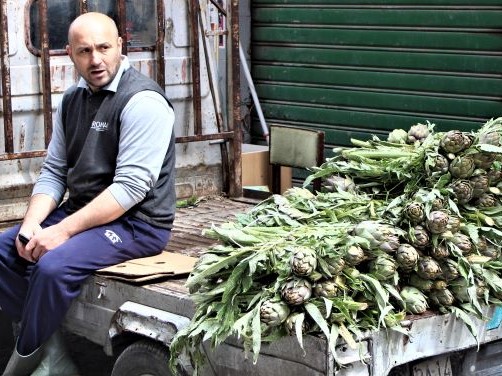

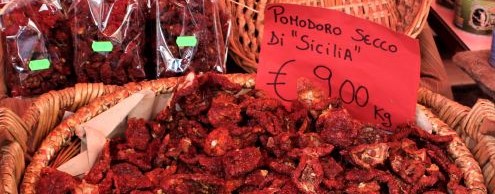
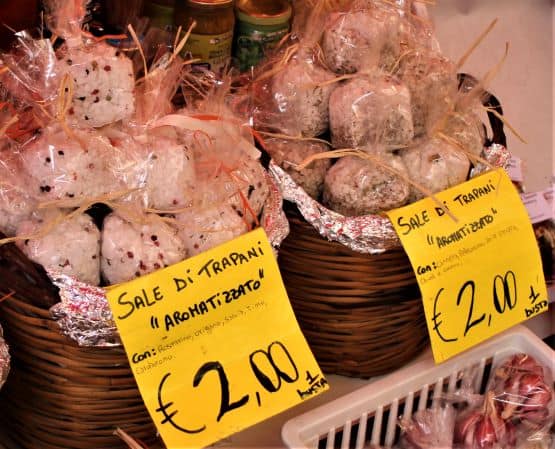

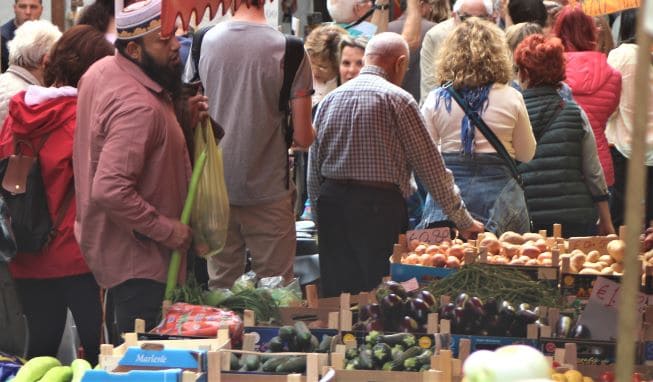
Ballaro Market
This African atmosphere is most evident at the Ballaro Market. That’s because most of the recent immigration to Palermo has been from Africa. In addition to all the food, there’s also lots and lots of clothing vendors selling cheap Italian fashions.
Ballaro has piles of fresh produce along with prepared foods like the famous, and gag-inducing for some, spleen sandwich (Panino con la Milza).
Il Capo Market
Il Capo is best known for its fish mongers. They will yell at prospective customers in hopes of enticing them to buy. There’s also plenty of prepared food and fresh veggies here. The winding streets of the market harken back to the days when Arabs ruled here.
La Vucciria Market

La Vucciria is on the list as a market, but, truth be told, the market itself is rather sad. However, at night, La Vucciria really comes to life. Inexpensive, and legally questionable, food vendors set up shop in Piazza Caracciolo. Close by is Taverna Azzurra, a place known for cheap beer and a rowdy atmosphere.
This is one of the best spots in Palermo for people watching; just keep your wallet out of sight and leave flashy jewelry at home.
The Leopard
One thing I’m always sure to do before taking a trip is to watch movies and read books about the place I’m going to visit. Guide books and TV documentaries about the place are fine, but I’m talking about film, actual movies, and novels.
For example, before our first trip Asheville, I read Thomas Wolfe’s “Look Homeward, Angel” and “You Can’t Go Home Again.” It helped me understand the world of Asheville from 100 years ago, even if both books were works of fiction.
For Palermo, my recommendation is The Leopard by Giuseppe Tomasi di Lampedusa, the last Prince of Lampedusa. It tells the story of a Prince who, caught up in political upheaval in Sicily, finds his position and wealth eroding, something Giuseppe had firsthand knowledge. The Leopard was also made into a fine film in 1963 starring Burt Lancaster and Claudia Cardinale.
Giuseppe’s daughter in law, Duchess of Palma, Nicoletta Polo, along with her husband own the Palazzo Lanza Tomasi and have renovated the palace and turned it into Butera 28 Apartments, where visitors can stay.
Best of all, Nicoletta offers cooking classes in the actual palace. She takes guests to the Il Capo market to shop for ingredients which are then prepared and enjoyed.
Passeggiata

The most charming Italian custom is the passeggiata. Early each evening, Italians young and old, stroll along the street in their village, town, or city. It’s quite the scene as parents with kids in strollers, teenagers, and old folks all mingle, gossip, flirt, and, perhaps, get a gelato.
My favorite passeggiata takes place in Ferrara in Emilia-Romagna. Here, instead of strolling on foot, the passeggiata takes place on two wheels as the people of Ferrara ride bikes for their evening constitutional.
In Palermo, the passeggiata is on the typical two feet and runs along Via Maqueda between Quattro Canti and the Massimo Theater. The street is closed to cars during the evening passeggiata, encouraging even more people to participate.
Quattro Canti (Four Corners)
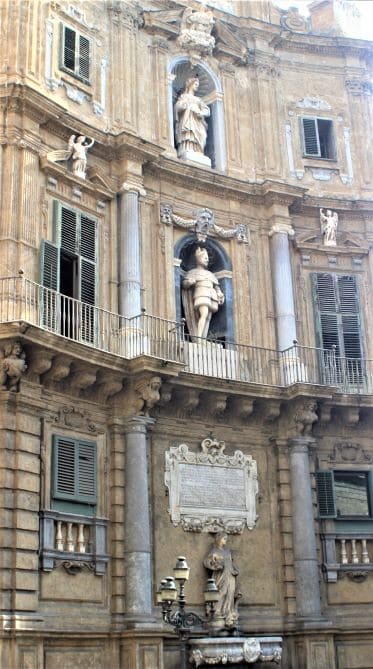
Whether your passeggiata starts of ends at the Quattro Canti, be sure to pause and soak it in. Quattro Canti was laid out in the early 17th century by architects Giuilo Lasso and Mariano Smiriglio and named Piazza Vigliena.
At the intersection of Via Maqueda and Corso Vittorio Emanuele, each building, instead of having a corner, has a curved facade. Each of the four curved facades is four stories high and has a fountain at ground level (taking up two stories of height). Each fountain represents one of the four seasons.
Above the fountains are statues tucked in niches. They are of Spanish kings who ruled Sicily (Charles V, Philip II, Phillip III, and Phillip IV). Finally, above the kings are statues of four saints (Saint Agatha, Saint Ninfa, Saint Oliva, and Saint Cristina).

The Quattro Canti is quite extraordinary, just sitting there at one of the busiest intersections in Palermo. Image how magnificent the statues and fountains must’ve looked before millions of cars spewing exhaust stained them. Then again, the current shabbiness and faded glory of a once-powerful empire seems appropriate.
Churches
“Cathedral fatigue” is a real thing. After a couple of churches, you walk in, look around, say “that’s nice,” and head out to look for a gelato. But, there are some amazing churches that are far from the norm in Palermo.
My advise; break them up. If you’re staying for a few days (and you should, Palermo is worth a good, long stay), visit a church each day before lunch. That way you can appreciate what each one has to offer and reward yourself with a nice plate of pasta afterwards.
Cappella Palatina (Palatine Chapel)
In the 11th century, southern Italy and Sicily were under Arab rule. And, the Normans were none too pleased with that fact. Eventually, the Normans took control of Sicily and Roger II was crowned as king.
Roger ordered the building of a church in the Norman Palace (Palazzo dei Normanni) which was originally the Emir’s castle.
The Cappella Palatina (Palatine Chapel) is a mishmash of styles with Norman influences, of course, but also arches that seem to be Arabic in design. The main attraction is the mosaics. These works of art shimmer and sparkle on the walls. Hard to believe they’re almost 900 years old!
The Chapel can get crowded with visitors but try to take some time and check out the detail on these amazing pieces. Truly unique.
Capuchin Catacombs
Unlike an ossuary where bones of of the dead are kept, the Capuchin Catacombs have the bodies of Friars, professionals, townspeople, and children preserved under the Monastery.
By the end of the 16th century, Palermo’s Capuchin Monks were running out of room in the Monastery’s cemetery. So, they began digging tunnels under their church. In 1599, Friar Silvestro of Gubbio died, was mumified, and placed in the newly dug catacombs.
Over the years, brothers were placed in the catacombs in their Capuchin robes. Later, local professionals, whose families viewed internment in the catacombs as a status symbol, were placed there. Deceased women, virgins, and children also have space in the catacombs.

It is thought that the cool, dry air of the catacombs, along with a special embalming procedure used by the monks helps to keep the corpses from deteriorating. In fact, one of the last bodies placed in the catacombs was that of Rosalia Lombardo, a 2 year old girl who died in 1920. He body is so lifelike that she is referred to as “Sleeping Beauty.”
Of course, even expert embalming cannot keep centuries old bodies from decomposing. Of the 8,000 bodies in the catacombs, many, while still dressed, are not much more than skeletons.
If this all sounds rather ghastly, for a lot of people, it is. If you’re squeamish about such things, don’t go. Also, know that photography is prohibited, though there are plenty of images floating around the internet.
Cattedrale di Palermo (Palermo Cathedral)
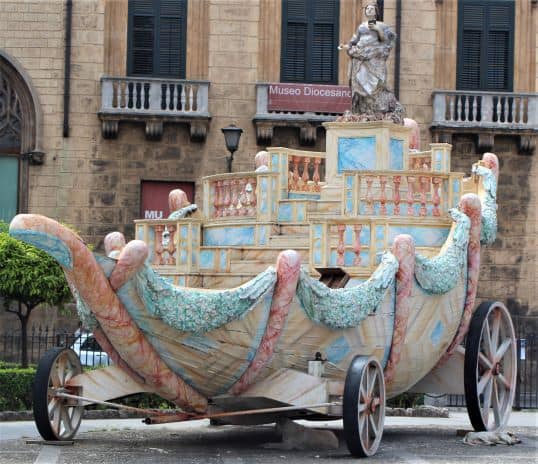
The largest, and most famous church in the city is the Cattedrale di Palermo (Palermo Cathedral). It also represents the incredible melting pot that is Sicily and Palermo.
A church was originally built on this site around the 6th century and turned into a mosque in the 10th century. But, the cathedral that stands today was first built in 1185. Towers were added about 600 years ago and another addition took place about 500 years ago with a major renovation starting in 1785.
All of these additions, changes, and renovations give the church Gothic, Baroque, and Neoclassical elements. Much of the Norman and Moorish design elements were lost during the last renovation.
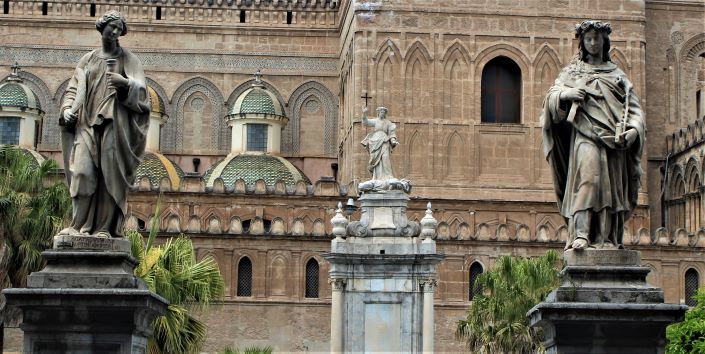
Mafia
Okay, let’s address the elephant in the room. The Mafia in Sicily. For many people, the only thing they know about Sicily is the Mafia. And, the Mafia was a huge problem in Sicily. Especially in Palermo, the Mafia permeated every aspect of life, from business to government to religion.

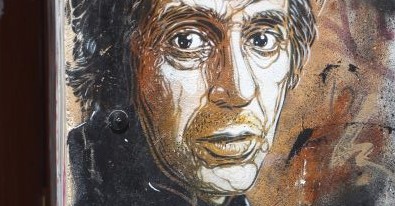
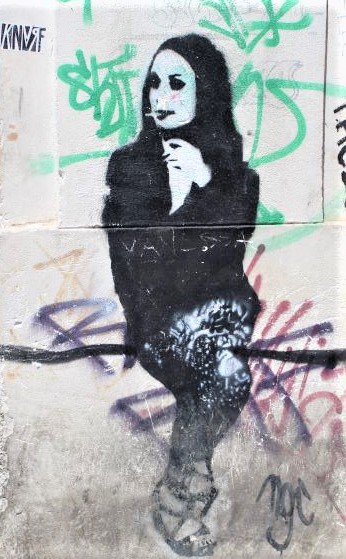
For an excellent overview of the Sicilian Mafia, read Cosa Nostra: A History of the Sicilian Mafia. The book tracks the history of the Mafia all the way back to the bandits of the 19th century and draws a straight line to mobsters of the 21st century.
For decades the Cosa Nostra terrorized the people of Palermo with their violent tactics. And, they stole from the public by demanding Pizzo (protection money) from businesses and by using substandard building materials in construction companies that had been infiltrated by the Mafia.
Ever wonder why churches built centuries ago can withstand earthquakes in Italy while recently constructed schools and apartment buildings pancake? One reason is poor construction by Mafia run companies. Another is engineers and building inspectors who have been paid to look the other way.
That’s the bad news. The good news is that the Mafia is much, much less powerful than it was as recently as 30 years ago. Unfortunately, it took a pair of tragedies to turn tide against the Mafia.
Giovanni Falcone and Paolo Borsellino grew up in the same neighborhood in Palermo where many kids ended up in the Mafia. Giovanni and Paolo took a different course and the lifelong friends became prosecutors and judges in the Italian legal system, spearheading legal attempts to break the Mafia. This culminated in the so-called Maxi Trial of the late 80’s where hundreds of mobsters were tried, found guilty, and imprisoned.
Of course, the Mafia was not happy with this turn of events. After all, much of the judiciary in Sicily had been in the pocket of organized crime for decades.
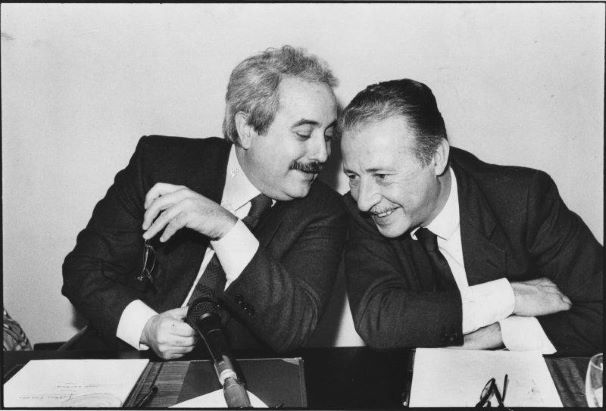
On May 23rd, 1992, a bomb planted under the road was detonated by the Mafia and killed Giovanni, his wife, and three police officers. Less than two month later, Paolo was killed, along with five police officers, by a car bomb.
In the aftermath of these horrific assassinations, public opinion finally turned against the Mafia. Whereas, before the syndicate had been tolerated, and even accepted as inevitable, in Sicily, now there was outright hostility towards the organization.
People rose up and called out the criminals. Businesses began refusing to pay the Pizzo, or protection money. In fact, today in Palermo you can see stickers in storefronts proudly proclaiming that the business is part of the Anti-Pizzo crusade in the city. There’s even an Anti-Pizzo tour in Palermo where visitors learn about the Mafia and the campaign to stomp out crime and corruption.
And, as the government has seized land once owned by the Mafia, farmers and small businesses have bought it and began growing produce and creating products on it. A store in Palermo, Libera Bottega Dei Saperi E Dei Sapori Della Legalità, sells the items that have been made on this liberated soil.
Teatro Massimo
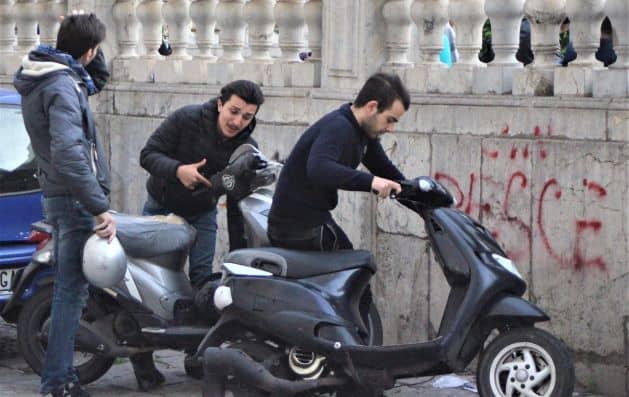
I didn’t grow up with opera and my Italian is beginner level at best. But, I have learned to love opera. The melodies are memorable and the stories (even if I don’t understand everything that is going on) are moving.
Karen and I went to an Opera in Palermo at Teatro Massimo. I didn’t even look at the tickets, we just bought them and went. The theater is magnificent and the performance was even better. In the first act, some poor woman was raped and seemed to be plotting revenge when the curtain fell. The second act started with a wedding. No revenge ever took place or was ever mentioned again. I couldn’t figure it out. How could the storyline be so disjointed? Even when I haven’t understood the language, I could always piece together the story-until this one.
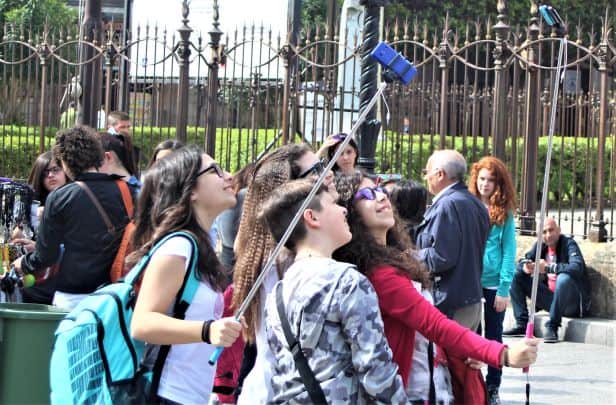
It wasn’t until I got home and looked at the ticket that I realized we had seen two mini-operettas. Of course the stories weren’t cohesive, they were two completely different tales!
Even if you can’t see a performance, there are inexpensive tours of the opera house available. And you get to go to the roof for great views of the city.
And, if you’ve ever seen Godfather III, you’ve seen the Teatro Massimo.
Day Trips
Cefalu
Cefalu is a quick (less than 1 hour) train ride from Palermo and very popular with locals and tourists alike. Since parking is limited in Cefalu, so I don’t recommend taking a car.
Beaches in Cefalu
One of the main attractions is the beach. Il Lungomare (Promenade) has the most convenient location and has amenities like chairs and umbrellas. Il Lungomare is very popular and in summer can be very crowded. Settefrati Beach is a little further from town and has good amenities and lifeguards.
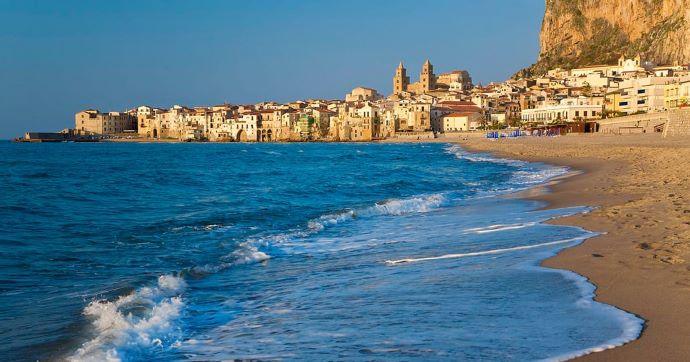
Duomo di Cefalu (Cefalu Cathedral)
The Cefalu Cathedral is actually older than the one in Palermo by about 50 years. Like many of the churches in this part of Sicily, it is mainly Norman in design with Arab and Byzantine features demonstrating a few of the civilizations who have conquered Sicily over the centuries.
The main reason to visit the cathedral is the imposing Norman towers and the incredible Byzantine-style mosaics.
Lavatoio Medievale
A Medieval laundry where fresh water flowed for cleaning clothes. A rather ingenious innovation and, apparently, the site where much gossip was exchanged.
Rocca di Cefalu
Hope you’re ready for a climb.
It’s a long hike, and although the first part has stairs, the rest is a tough, rocky climb. Good shoes are a must as is an early start, because it gets hot. Maybe bring an extra shirt cuz you’re probably gonna get sweaty.
At the top, where an old Citadel once stood, are some of the most magnificent views in Sicily.
Erice
Erice is on the west coast of Sicily and less than a 2 hour drive from Palermo. Bus service is also available, but it’s not convenient and you need to make a change in Trapani.
Or, take the bus to Trapani and then cable car up to Erice. Funivia Trapani-Erice runs from a station just outside Trapani into the sky and the town of Erice. It’s a thrilling ride and a great opportunity to make your social media friends jealous. And, after all, isn’t that what travel is about?

There are plenty of churches in Erice and a Norman castle, but, by far, the best thing to do in Erice is make a pilgrimage to Pasticceria di Maria Grammatico, Ms. Grammatico spent much of her youth as a nun and it was during this time that the other nuns taught her to bake. When she left the nunnery she took the recipes with her, much to the sisters’ chagrin. Today, many years later, Maria Grammatico makes the finest pastries in all of Sicily. Her Pasta alla Mandorla (almond cookies) are incredible.
Transportation
Falcone Borsellino Airport aka Palermo Airport (PMO)
Direct flights to most major European cities (some seasonal), Tunis, and Newark, NJ (seasonal).
Località Punta Raisi, 90145 Cinisi, Sicily, Italy
Ground Transfer from the airport
Prestia e Comande Bus
Bus from the Airport to Stazione Centrale takes about 55 minutes.
Taxi
40-50 Euro depending on your final destination.
Shared Taxi
Cheaper alternative. Mini bus waits until filled and then drops off each passenger.
Palermo Centrale
Main train station in Palermo with scheduled departures all over the island and mainland Europe.
Piazza Giulio Cesare, 90123 Palermo, Sicily, Italy
Local Transportation
Bus and Tram
The Palermo Bus and Tram service is operated by AMAT. Tickets are good for 90 minutes. Buy tickets onboard or, save money by purchasing tickets at a kiosk.
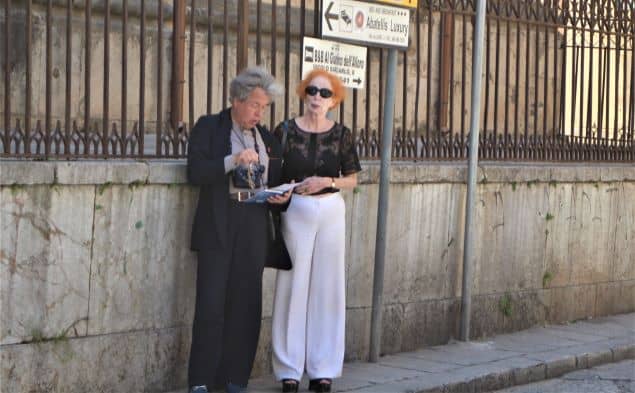
Navette Gratuite (Free Shuttle)
Free Shuttle operating in the historic district of Palermo.
Funivia Trapani-Erice
Cable car from outside Trapani to hilltop Erice in western Sicily.
SP31 per Erice, 91016 Casa Santa, Erice, Sicily, Italy
Index of Things to Do in Palermo
Streaty
Food tour company with foodie passport you get stamped as you eat.

Sicilian Cooking Lesson
Shopping for ingredients at Il Capo Market and preparing dishes in a Sicilian palace.
Anti-Pizzo Tour
Learn more about the Mafia and efforts to stamp out crime and corruption in Palermo.
Palazzo Abatellis
Once a Gothic-Catalan palace, then a monastery, now a great art museum featuring the famous work “The Triumph of Death.”
Via Alloro 4, 90133, Palermo, Sicily, Italy
Palazzo Chiaramonte
14th century palace and later jail for victims of the Spanish Inquisition.
Piazza Marina 61, 90133, Palermo, Sicily, Italy
Cappella Palatina (Palatine Chapel)
Byzantine, Norman and Fatimid Royal Chapel.
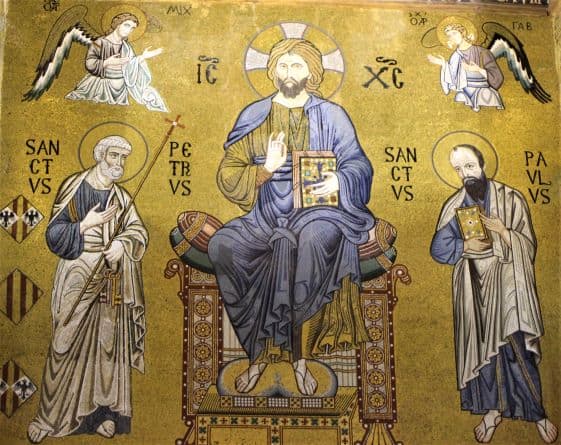
Piazza del Parlamento, 90134 Palermo PA, Italy
Cattedrale di Palermo (Palermo Cathedral)
Norman/Renaissance/Neoclassical mishmash of styles.
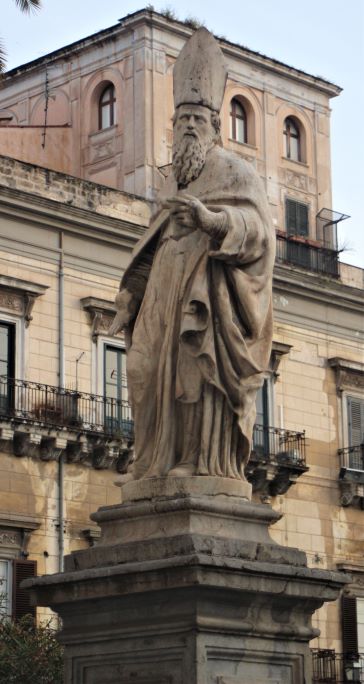
Via Vittorio Emanuele, 90134 Palermo PA, Italy
The Martorana (Santa Maria dell’Ammiraglio)
Named for a Syrian Admiral in charge of the Sicilian Navy, this is where Frutta Martorana was invented.
Piazza Bellini, 3, 90133 Palermo PA, Italy
Basilica of San Domenico (Church of St. Dominic)
Sicilian Baroque church.
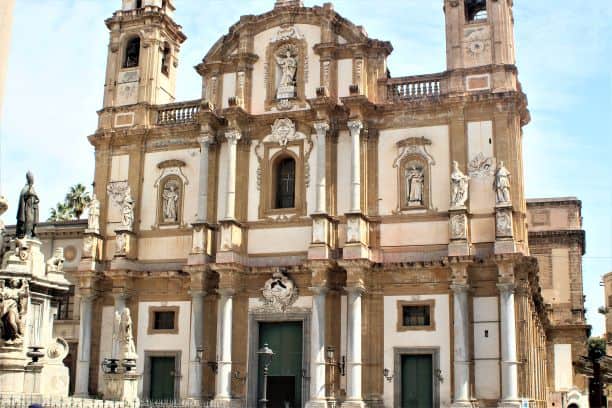
Piazza San Domenico, Palermo, Sicily, Italy
Capuchin Catacombs
Catacombs with preserved bodies of friars and citizens dating back as far as 400 years.
Piazza Cappuccini 1, Palermo, Italy
San Giovanni degli Eremiti
Church, then a mosque, then a church again. Identified by its distinctive red domes.
Via dei Benedettini, 20, 90134 Palermo, Sicily, Italy
Santuario di Santa Rosalia
Church built into a cave dedicated to the patron saint of Palermo.
Via Pietro Bonanno, s.n. Montepellegrino, 90142, Palermo, Sicily, Italy
Teatro Massimo
Palermo’s gorgeous opera house.
Piazza Verdi, 90138 Palermo, Sicily, Italy
Teatro Argento
Puppet theater

Via Pietro Novelli, n1/a, 90134 Palermo PA, Italy
Il Lungomare (Promenade)
Beach in Cefalu.
90015 Cefalù, Province of Palermo, Sicily, Italy
Settefrati Beach
Beach in Cefalu with lifeguards.
90015 Cefalù, Province of Palermo, Sicily, Italy
Cefalu Cathedral
Interesting church in Cefalu is actually older than the cathedral in Palermo.
Piazza del Duomo, 90015 Cefalu, Sicily, Palermo
Rocca di Cefalu
Amazing views after a long, hot climb.
Lavatoio Medievale
Medieval laundromat in Cefalu.
Via Vittorio Emanuele, 90015 Cefalu, Sicily, Italy

Index of Food & Drink in Palermo
Bye Bye Blues
Michelin starred fine dining.
Via del Garofalo 23, 90149 Mondello, Palermo, Sicily, Italy
Osteria Mangia e Bevi
Excellent restaurant with several vegetarian options. Very good wine list.
Largo Cavalieri di Malta, 18, 90133 Palermo, Sicily, Italy
Gagini Social Restaurant
Upscale restaurant. If you want to meet new friends, sit at the communal table.
Via Cassari 35, 90133, Palermo, Sicily, Italy
Osteria Ballarò
Upscale restaurant in a homey setting.
Via Calascibetta, 33, 90133 Palermo, Sicily, Italy
Arre Gusto
Extensive wine list and nice small plates.
Via Alessandro Paternostro 59, 90133, Palermo, Sicily, Italy
Ristorante Ferro
Contemporary family-run restaurant featuring seafood and pasta dishes.
Piazza Sant’Onofrio, 42, 90134 Palermo PA, Italy
Torquemada
Fun and sometimes boisterous restaurant near the Teatro Massimo
Via Pignatelli Aragona, 64, 90141 Palermo, Sicily, Italy
Le Cattive
Restaurant in Palazzo Butera. Wines from Sicilian winemaker Tasca.
Via Butera, 18, 90133 Palermo, Sicily, Italy
A’Cuncuma
Fine Sicilian dining near the Palermo Cathedral.
Via Judica, 21, 90134 Palermo, Sicily, Italy
La Delizia Gelateria
Excellent gelato. Brioche con gelato available.
Via Dammuso 57, 90147 Sferracavallo, Palermo, Sicily, Italy
KaPalle
Top notch and creative Arancina.
Via Terrasanta, 111B, 90141 Palermo, Sicily, Italy
Sfrigola
Two dozen different Arancina.
Corso Calatafimi, 11, 90129 Palermo, Sicily, Italy
Panineria Friggitoria Chiluzzo
Great street food, Pannele.
Piazza della Kalsa 10, 90133, Palermo, Sicily, Italy
Nino u’ Ballerino
Street food by celebrated chef Nino.
Corso Camillo Finocchiaro Aprile 76, 90138, Palermo, Sicily, Italy
‘Nni Franco U’Vastiddaru
Good fried food, Panelle, etc.
Via Vittorio Emanuele 102, 90133, Palermo, Sicily, Italy
Focacceria Del Massimo
Great little street food restaurant.
Via Bara All’Olivella, 76, 90133 Palermo PA, Italy
I Cucci
Great outdoor restaurant in Piazza Bologni.
Piazza Bologni, 3/4, 90134 Palermo Sicily, Italy
Panificio Graziano
Outstanding Sfincione.
Via del Granatiere 11, 90143, Palermo, Sicily Italy
Spinno
Excellent vegetarian restaurant. Sfincione by request for dinner.
Via Marche, 12/14, 90144 Palermo, Sicily, Italy
Flower Burger
Very good European chain of vegan burger joints has a location in Palermo.
Via Isidoro la Lumia, 3, 90139 Palermo, Sicily, Italy
Villa Costanza
On a hill outside of town, restaurant has incredible views and good pizza, too.
Via Pietro Bonanno, 42, 90142 Palermo, Sicily, Italy
Trattoria Piccolo Napoli
Owner has his own fishing boats supplying fresh catch.
Piazzetta Mulino a Vento, 4, 90139 Palermo, Sicily, Italy
Al Fondaco Del Conte
Next to the Ballaro Market, this restaurants serves homestyle Sicilian food.
Piazza Conte Federico, 24, 90134 Palermo, Sicily, Italy
Pasticceria Jose
Excellent Cannoli.
Via Messina Marine 267, 90123, Palermo, Sicily, Italy
Pasticceria Cappello
Famous bakery known for their 7 layer cake and Cannoli.
Via Colonna Rotta 68, 90134, Palermo, Sicily, Italy
Bar Alba
Bakery, gelato, Frutta Martorana.
Piazza Don Bosco, 7, 90143 Palermo PA, Italy
Taverna Azzurra
Cheap beer, great atmosphere.
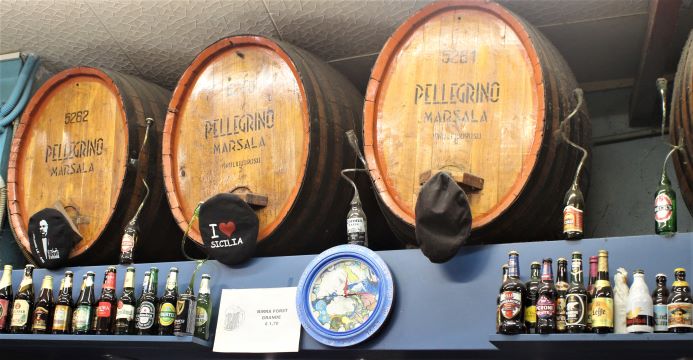
Via Maccherronai, 15, 90133 Palermo PA, Italy
Enoteca Picone
Palermo’s top wine shop is also a wine bar with cold plates for snacking.
Via Guglielmo Marconi 36, 90141, Palermo, Sicily, Italy
Mak Mixology
Excellent cocktails in an abandoned Fascist era courtyard.
Via Bari, 50, 90133 Palermo, Sicily, Italy
Enoteca Butticè
Nice wine bar with a selection of beers as well.
Piazza San Francesco di Paola 12, 90138, Palermo, Sicily Italy
Nangarraluni
Incredible mushroom dishes. 1.5 hour drive from Palermo, half hour from Cefalu.
Via delle Confraternite 10, 90013 Castelbuono, Sicily Italy
Antico Bar Sport
Outstanding Cannoli in Piana degli Albanesi.
Via Giorgio Kastriota 48, 90037 Piana degli Albanesi, Sicily, Italy
Extra Bar
Great Cannoli in Piana degli Albanesi.
Piazza Vittorio Emanuele II 4, 90037 Piana degli Albanesi, Sicily Italy
Marco De Bartoli
Marco is the top winemaker in Marsala. The winery is run by him and his children.
Contrada Fornara-Samperi 292, 91025, Marsala, Sicily, Italy
Florio
Most famous producer of Marsala.
Via Vincenzo Florio 1, 91025, Marsala, Sicily, Italy
Cantine Pellegrino
Famous Marsala winery.
Via del Fante 39, Ex Lungomare Salinella, 91025, Marsala, Sicily, Italy
La Sirena Ubriaca
Lovely wine bar with small plates.
Via Giuseppe Garibaldi 39, 91025, Marsala, Sicily, Italy
Donnafugata Winery Farmhouse
Winery on the small island of Pantelleria between Sicily and Tunisia.
Contrada Khamma Fuori 6, Pantelleria, Italy
Pasticceria Maria Grammatico
Bakery with sweets made by a former nun in Erice.
Via Vittorio Emanuele, 14, 91100 Erice Sicily, Italy
Index of Shopping in Palermo

Ballaro Market
Largest and most lively outdoor market.
Via Ballaro 1, Palermo, Sicily, Italy
Mercado del Capo
Known for its fish market.
Via Cappuccinell, Palermo, Sicily, Italy
La Vucciria Market
The market itself is rather sad, having lost many vendors in recent years. But after dark it heats up with (probably illegal) street food vendors and lots of great people watching.
Via Coltellieri 46, Palermo, Sicily, Italy

Libera Bottega Dei Saperi E Dei Sapori Della Legalità
Sicilian goods grown and produced on land seized from the Mafia by the government.
Piazza Castelnuovo, 13, 90141 Palermo, Sicily, Italy
Enoteca Picone
Palermo’s top wine shop is also a wine bar with cold plates for snacking.
Via Guglielmo Marconi 36, 90141, Palermo, Sicily, Italy
Il Laboratorio Teatrale
Puppetry is an artform in Sicily and you can buy examples at this puppet workshop.
Via Bara All’Olivella, 40, 90133 Palermo, Sicily, Italy
La Coppola
The place to buy the famous Sicilian caps.
Via di Stefano, 14, 90141 Palermo PA, Italy
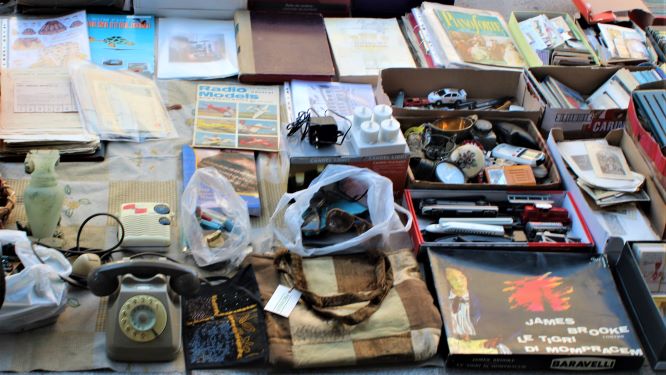
Index of Places to Stay in Palermo
Butera 28 Apartments
Self-catered apartments in a Sicilian palace.
Via Butera, 28, 90133 Palermo, Sicily, Italy
B&B Amélie
Sweet B&B in Palermo.
Via Principe di Belmonte, 94, 90139 Palermo PA, Italy
Grand Hotel Piazza Borsa
Excellent accommodation, centrally located.
Via Cartari, 18, 90133 Palermo PA, Italy
Artemisia Palace Hotel
Great location right on Via Roma.
Via Roma, 499, 90139 Palermo, Sicily, Italy
About the Author

Brent Petersen is the Editor-in-Chief of Destination Eat Drink. He currently resides in Setubal, Portugal. Brent has written the novel “Truffle Hunt” (Eckhartz Press) and the short story collection “That Bird.” He’s also written several Foodie Travel Guides to cities in Italy including Rome, Naples, and the Cinque Terre. Brent’s podcast, also called Destination Eat Drink, is available on all major podcasting platforms and is distributed by the Radio Misfits Podcast Network.


